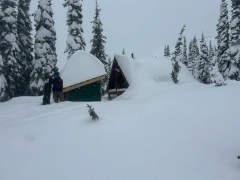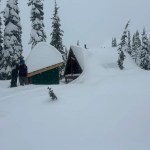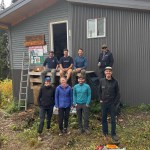Southern Rockies Avalanche observations March 14
Gord and I were on Michel Ridge today which is in the north end of the Flathead sub-region just SE of Sparwood. This location is a couple Km E of the Ma last Friday that resulted in the death of a snowmobiler. There was about 20 cm of HN24 which brings the HST to 60 cm at 2000m in this area. Winds were M-SW most of the day and snow was loading N and E aspects. Temperatures were mild today but cooler then they have been, daytime high at 2000m was -7. Clouds obscured the ski for most of the morning and it was snowing S-1, clouds broke by early afternoon and the sun shone through periodically.
Several avalanche deposits were seen that would have come down in the past 24 hours, one came down while we were in the area, to sz 2.5 which were wind slabs 40 cm thick on N trough E aspects. We dug a pit on a 28 degree slope, E asp., 2150 m(TL), HS 265 cm. Several things stood out in the pit. First is the size of the early Feb. SH layer down 125 cm, still over a 1cm thick, very easy to find, and giving mod CT results with SP(or Q1) fracture character. We did a PST on this layer and only had to cut 30% to get a fracture to propagate to the end, here is a link to a video of that test (http://youtu.be/8TFE41pCX0o). Second is a nice temperature crust, wafer texture, about 2 cm thick down 60 cm at the bottom of the HST. The crust itself seems to be bonded well but there is a lower density stellar layer about 10cm above which failed in the mod range of the CT. The crust is a nice bed surface for a potential failure in this stellar layer and may help foster wider than expected propagation and concentrate stress from dynamic loading (i.e. a skier, sledder, pine marten, anything moving on the surface). Third is the mid Feb. SH layer which is down 90 cm, 30 cm below the crust and 35 cm above the early Feb. SH layer. This layer is thin, 1 or 2 mm, but failed with a hard(23) SP(or Q1) result in a CT.




































